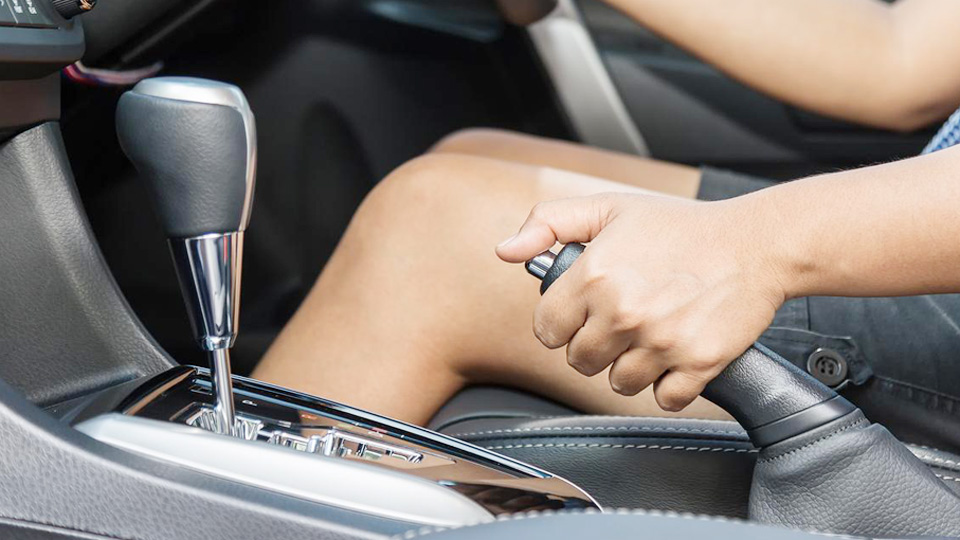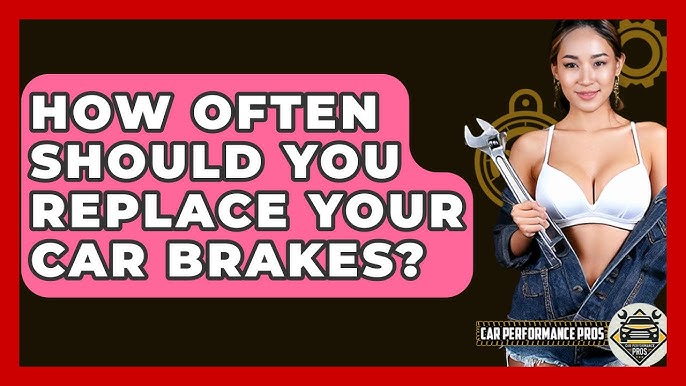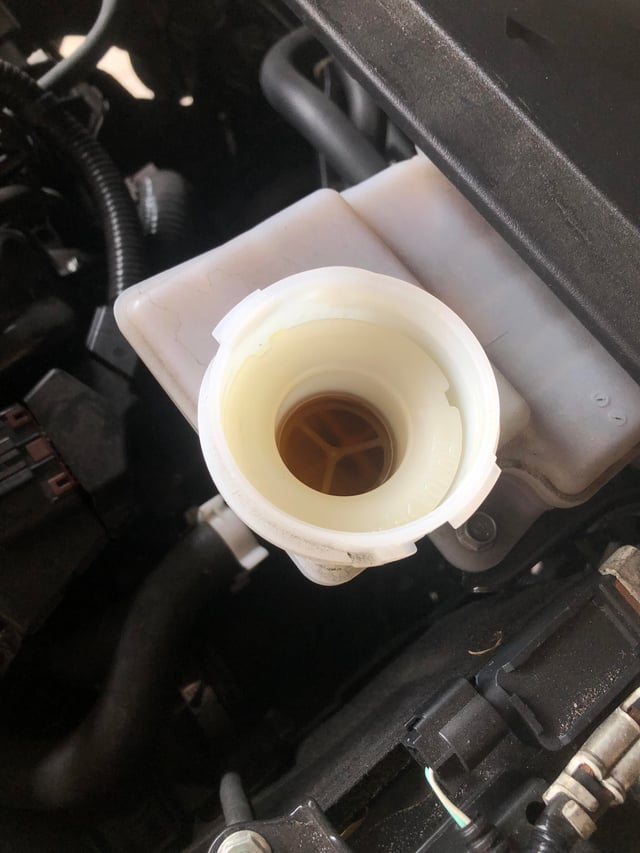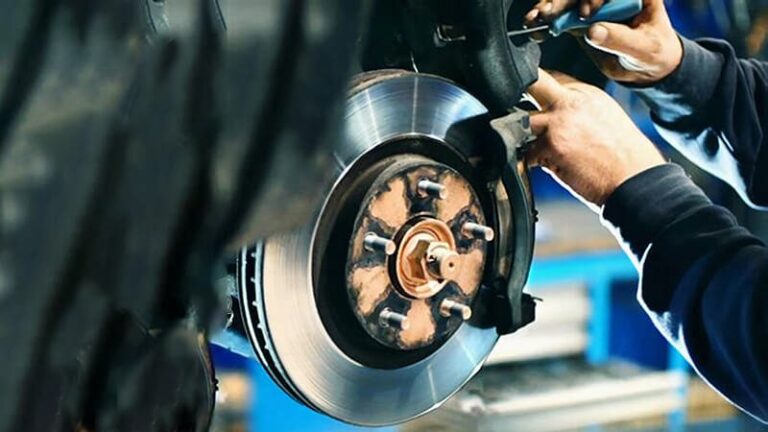When a driver asks me “Why is My Car Saying Release Parking Brake?”, I usually explain it’s your car’s way of reminding you that the brake is still engaged—or that something in the system is acting up. On most modern vehicles, a warning light or message pops up if you try to drive with the parking brake applied. Sometimes it’s as simple as forgetting to fully release the lever or foot pedal before hitting the road. Other times, it can point to a sticky cable, a worn-out switch, or even an issue with the electronic parking brake system.
I’ve seen this plenty of times in my garage. A customer comes in thinking the message means something major is broken, when in reality, the brake wasn’t fully disengaged. On the flip side, I’ve also had cases where the light stayed on because the parking brake switch was faulty or the mechanism was jammed with rust and dirt.
I’ll break down the common reasons why your car shows a “release parking brake” warning, how to troubleshoot whether it’s just user error or a mechanical issue, and the steps you can take to get it sorted so your brakes work safely and your dashboard stays clear of warnings.

Image by carfromjapan
What Is the Parking Brake and Why Does It Matter?
Parking Brake System
The parking brake is a mechanical or electronic system designed to hold your vehicle in place, especially on slopes. In older cars, it’s typically a hand lever or foot pedal connected to a cable that engages the rear brakes. Modern vehicles, especially those with electronic parking brakes (EPB), use a button or switch that activates a motor to apply the brakes. This system is vital for safety, preventing rollaways, and it’s often used during emergency stops if your main brakes fail.
From my time in the shop, I’ve seen parking brakes save the day—like when a customer’s Toyota Camry started rolling on a steep driveway because they forgot to engage it. But when the system malfunctions, it can trigger that pesky “Release Parking Brake” warning, even when you’re sure it’s off.
Why It Matters
A faulty parking brake isn’t just annoying—it’s a safety hazard. If it’s stuck on, it can overheat your brakes, reduce fuel efficiency, and cause uneven tire wear. If it’s not engaging properly, your car could roll, especially on inclines. Plus, ignoring the warning can lead to costly repairs down the line, like replacing worn brake pads or rotors. Fixing it early saves you money and keeps your vehicle reliable.
Common Causes of the “Release Parking Brake” Warning
Faulty Parking Brake Switch
The parking brake switch is a small sensor that tells your car’s computer whether the brake is engaged or released. If it’s faulty, it might send a false signal, triggering the warning. I’ve seen this a lot in Fords and Chevys, where dirt or corrosion on the switch causes it to malfunction.
Signs of Failure: The warning light stays on even when the brake is released, or it flickers intermittently.
When to Replace: If cleaning the switch doesn’t work, replace it. It’s a cheap fix—usually $10–$30 for the part.
Stuck or Stretched Parking Brake Cable
In manual parking brake systems, cables connect the lever or pedal to the brake mechanism. Over time, these cables can stretch, rust, or seize, causing the brake to stay partially engaged or fail to release fully. I once worked on a 2010 Honda Civic where a rusty cable was the culprit, and the owner had been driving with the brake slightly on for weeks!
Signs of Failure: A spongy or loose lever/pedal, dragging brakes, or uneven rear wheel resistance.
When to Replace: Replace cables if they’re rusted, frayed, or don’t move smoothly. Expect to pay $50–$150 for parts, depending on the vehicle.
Electronic Parking Brake Malfunction
Modern cars with EPBs rely on motors and electronic control units (ECUs). A glitch in the ECU, a faulty motor, or low battery voltage can trigger the warning. I’ve seen this in newer models like the 2018 Jeep Cherokee, where a software update fixed the issue without replacing parts.
Signs of Failure: The EPB button doesn’t respond, or the warning persists after multiple reset attempts.
When to Replace: Software updates or recalibration might solve it, but a faulty motor could cost $200–$500 to replace.
Worn Brake Pads or Calipers
If the parking brake uses the same brake pads as your regular brakes (common in disc brake setups), worn pads or sticky calipers can confuse the system. I recall a Dodge Ram where worn pads triggered the warning because the caliper wasn’t releasing properly.
Signs of Failure: Squealing brakes, uneven wear, or a burning smell from the rear wheels.
When to Replace: Replace pads if they’re below 3mm thick. Caliper repairs might be needed if they’re sticking.
OEM vs Aftermarket Parking Brake Parts
When fixing a parking brake issue, you’ll need to decide between OEM (Original Equipment Manufacturer) and aftermarket parts. Here’s a breakdown based on my experience working on everything from Fords to Toyotas.
| Part | OEM | Aftermarket |
|---|---|---|
| Parking Brake Switch | $20–$50 (e.g., Ford OEM switch for F-150) | $10–$30 (e.g., Dorman, Standard Motor Products) |
| Pros | Perfect fit, longer warranty, vehicle-specific | Cheaper, widely available, decent quality from trusted brands |
| Cons | Expensive, dealership-only in some cases | Varying quality, potential fitment issues |
| Parking Brake Cable | $80–$200 (e.g., GM OEM for Silverado) | $40–$100 (e.g., ACDelco, Raybestos) |
| Pros | Durable, exact specs, reliable | Affordable, good for budget repairs |
| Cons | Higher cost, longer lead time | May wear faster, check brand reputation |
| EPB Motor | $300–$600 (e.g., Honda OEM for CR-V) | $150–$400 (e.g., Bosch, A1 Cardone) |
| Pros | Seamless integration, longer lifespan | Cost-effective, decent for non-luxury cars |
| Cons | Pricey, complex installation | May lack precision, shorter warranty |
For critical safety components like parking brake cables or EPB motors, I lean toward OEM parts for reliability, especially for brands like Toyota, Honda, or GM. Aftermarket parts from trusted names like ACDelco or Bosch are fine for switches or cables in budget builds, but always check reviews and compatibility. Avoid no-name brands—they’re often counterfeit and fail quickly.
How to Spot Fake Parts
Counterfeit parts are a real problem. I once ordered a “bargain” parking brake cable for a Chevy Malibu, only to find it was a fake that snapped during installation. Here’s how to avoid fakes:
Check Packaging: OEM parts come in branded boxes with part numbers. Aftermarket parts from reputable brands like Dorman have clear labeling.
Verify Part Numbers: Cross-check the part number with your vehicle’s VIN on the manufacturer’s website or at a dealership.
Buy from Trusted Retailers: Stick to AutoZone, Advance Auto Parts, or RockAuto in the USA. Avoid sketchy online marketplaces.
Inspect Quality: Genuine parts have clean machining, no rough edges, and proper branding. Fakes often feel cheap or have misspellings.
Step-by-Step Guide to Diagnosing and Fixing the Issue
Step 1: Verify the Parking Brake Position
Before diving under the car, make sure the brake is fully released. For manual brakes, check that the lever or pedal is up. For EPBs, press the button to ensure it’s off. Sometimes, the lever gets caught halfway—give it a firm tug or push.
Step 2: Inspect the Parking Brake Switch
Locate the switch (usually under the center console or near the pedal). Disconnect it, clean it with electrical contact cleaner ($8 at AutoZone), and reconnect. If the warning persists, test it with a multimeter. A replacement switch is a quick fix—30 minutes with basic tools.
Step 3: Check the Cables
Jack up the rear of the car (use jack stands for safety). Inspect the parking brake cables for rust, fraying, or binding. Spray penetrating oil like WD-40 on sticky cables and work them back and forth. If they’re damaged, replace them. Pro tip: Label each cable to avoid mix-ups during reinstallation.
Step 4: Test the EPB System
For electronic brakes, check the owner’s manual for a reset procedure (e.g., holding the EPB button for 10 seconds). If that fails, use an OBD-II scanner ($30–$100) to check for codes. Low battery voltage can also trigger EPB warnings, so test your battery with a voltmeter (should read 12.6V when off).
Step 5: Inspect Brake Pads and Calipers
Remove the rear wheels and check the brake pads. If they’re thin, replace them ($50–$100 per axle for aftermarket). Inspect calipers for sticking—clean or rebuild them if needed. Lubricate the caliper pins with high-temp brake grease.
Common Mistakes to Avoid
- Forgetting to Bleed Brakes: If you open the brake system, bleed it to remove air bubbles.
- Over-tightening Cables: Adjust cables snugly, not overly tight, to avoid dragging brakes.
- Ignoring EPB Calibration: After replacing EPB parts, recalibrate the system using a scan tool or dealership service.
Installation and Maintenance Tips
Tools You’ll Need
- Jack and jack stands ($50–$150)
- Socket set and wrenches ($30–$100)
- Electrical contact cleaner ($8)
- OBD-II scanner (optional, $30–$100)
- Brake grease ($5)
- Multimeter ($20)
Safety First
Always work on a flat surface with the car in gear (manual) or park (automatic). Use wheel chocks and jack stands—never rely on a jack alone. Disconnect the battery when working on EPB systems to avoid electrical issues.
Maintenance Best Practices
- Lubricate Cables: Apply silicone-based lubricant to manual cables every 12 months or 15,000 miles.
- Test EPB Regularly: Engage and disengage the EPB monthly to ensure it’s working.
- Check Pads: Inspect rear brake pads during every oil change (every 5,000–7,500 miles).
- Clean Switches: Dust and grime build up, so clean the parking brake switch annually.
Personal Anecdote
I’ll never forget working on a 2015 Subaru Outback where the customer swore the parking brake was “haunted.” The “Release Parking Brake” light kept coming on randomly. After an hour of diagnostics, I found a corroded switch under the center console. A $15 part and 20 minutes later, the car was good as new. The customer was thrilled, and it reminded me how small fixes can make a big difference.
Conclusion
The “Release Parking Brake” warning is more than just a dashboard annoyance—it’s your car telling you something’s off with a critical safety system. Whether it’s a faulty switch, a rusty cable, or an EPB glitch, addressing it promptly keeps you safe and saves you from bigger repair bills.
By understanding the parking brake system, choosing quality parts (OEM for reliability, trusted aftermarket for budget), and following proper installation steps, you can fix this issue like a pro.
FAQ
Why does my car say “Release Parking Brake” when it’s already released?
This usually points to a faulty parking brake switch, stuck cable, or an EPB system error. Check the switch first, clean it, and inspect cables for rust or binding. For EPBs, try a reset or scan for codes.
Can I drive with the “Release Parking Brake” warning on?
It’s not safe. If the brake is partially engaged, it can overheat your brakes, wear pads unevenly, or reduce fuel efficiency. Diagnose and fix it ASAP.
How much does it cost to fix a parking brake issue?
Costs vary: $10–$50 for a switch, $50–$150 for cables, or $200–$600 for EPB motors. Labor adds $100–$300 if you go to a shop.
Should I choose OEM or aftermarket parking brake parts?
OEM parts are best for reliability and fit, especially for EPB systems. Aftermarket parts from brands like ACDelco or Dorman are fine for switches or cables but avoid cheap, unbranded options.
How often should I maintain my parking brake?
Check cables and switches annually or every 15,000 miles. Test EPB systems monthly and inspect brake pads during oil changes.



